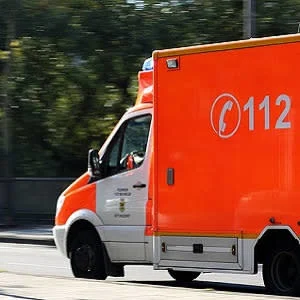Sudden out-of-hospital cardiac arrest (OHCA) is the most time-critical medical emergency. Survival from OHCA remains poor globally. Successful resuscitation relies on a strong chain of survival with the community, dispatch centre, ambulance, and hospital working together, according to a review paper in The Lancet, noting that early cardiopulmonary resuscitation (CPR) and defibrillation has the greatest impact on survival.
In patients with OHCA, the medical literature has focused more on hospital and advanced life support treatments than it has on community treatment and issues related to basic life support. Interestingly, there has been increasing recognition of the importance of the role of the community and the key function of emergency medical dispatch in coordination of bystander CPR and early defibrillation, the paper points out.
However, despite large-scale training efforts in communities, reported rates of bystander CPR have been low, for reasons including difficulty in identifying cardiac arrest, fear of causing harm, emotional distress, and reluctance to perform mouth-to-mouth resuscitation.
The dispatch centre (also known as the control room or call centre) has a central role in the coordination of the response to OHCA. In many ways, it is the brain of the emergency medical services (EMS) and determines the subsequent dispatch of resources and response to an OHCA.
"Dispatcher-assisted CPR programmes can nearly double the frequency of bystander CPR. Change in protocols to compression-only CPR have enabled dispatchers to give simple instructions for rescuing adults in sudden cardiac arrest," the paper explains. "Dispatch-assisted, compression-only CPR results in reduced delay in starting CPR, increased participation, and improved outcomes in early cardiac arrest."
If resuscitation efforts are delayed (as often occurs in unwitnessed cardiac arrest or when no bystander CPR is provided), the chances of successful resuscitation are substantially reduced. If the community response does not restart the heart, the paper says, resuscitation should be continued by EMS staff.
"However, the best approaches for airway management and the effectiveness of currently used drug treatments are uncertain. Prognostic factors and rules for termination of resuscitation could guide the duration of a resuscitation attempt and decision to transport to hospital," explains the paper. "If return of spontaneous circulation is achieved, the focus of treatment shifts to stabilisation, restoration of normal physiological parameters, and transportation to hospital for ongoing care."
There are no absolute rules on the optimal duration of resuscitation. Factors associated with improved outcomes (e.g., witnessed arrest, initial shockable rhythm, bystander CPR) or the presence of potentially reversible causes, could guide clinicians to continue with resuscitation efforts for longer.
Source: The Lancet
Image Credit: Pixabay
References:
Marcus Eng Hock Ong, Gavin D. Perkins, Alain Cariou (2018) Out-of-hospital cardiac arrest: prehospital management. Lancet 2018; 391: 980–88 DOI: https://doi.org/10.1016/S0140-6736(18)30316-7
Latest Articles
defibrillation, cardiopulmonary resuscitation, out-of-hospital cardiac arrest, OHCA
Sudden out-of-hospital cardiac arrest (OHCA) is the most time-critical medical emergency. Survival from OHCA remains poor globally. Successful resuscitation relies on a strong chain of survival with the community, dispatch centre, ambulance, and hospital










